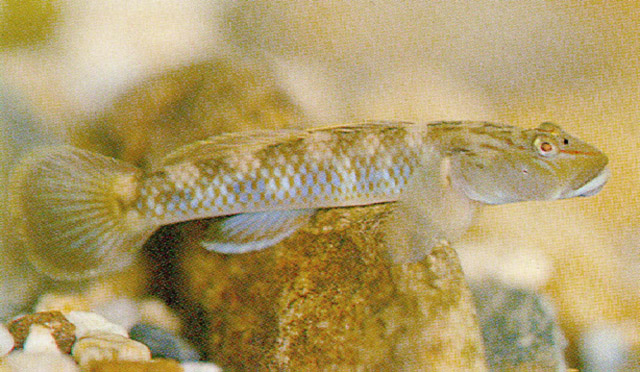| Gobiidae (Gobies), subfamily: Gobionellinae |
| 5.8 cm TL (male/unsexed) |
|
demersal; freshwater; brackish; marine; pH range: 7; dH range: 20, amphidromous |
| Asia: river basin of the seas of Japan, Okhotsk, the Pacific coasts of Japan,Hokkaido, Ryukyu, Taiwan, rivers of Korea, continental China and the Philippines (Ref. 26334); Viet Nam (Ref. 89724). Introduced to the USA (Washington, Columbia and Portland, Oregon) (Ref. 92840). |
|
Dorsal spines (total): 7-7; Dorsal soft rays (total): 8-8; Anal spines: 1-1; Anal soft rays: 8-8; Vertebrae: 26-26. This species is distinguished from its congeners by the following set of characters: D2 I,8; A I,8; pectoral-fin rays fin rays 36-40 (modally 19); longitudinal scale rows 32-35; transverse scale rows 9-10; predorsal scales 11-13 with a trifurcate anterior margin of which point 3 lies above the upper gill opening; vertebrae 10 + 16 = 26; gill opening extending ventrally to the vertical midline of the opercle. Coloration of males and females: males' basal region of body scale pockets with a bright orange spot, somewhat indistinct in females; the lateral side of females with a middle longitudinal row of discontinuous brownish black spots or bars and their dorsal lateral region with 3-4 longitudinal rows of black spots and the caudal fin base with 2 separate, vertical black bars; males with second dorsal fin with 4 longitudinal rows of reddish brown bars or spots and caudal fin with 8-10 waving vertical orange to brown stripes; pectoral fin base with a basal distinct, oblique deep brown stripe; cheek scattered with 16-25 small, orange red spots, brighter in males; the pectoral fin base of the species with a basal distinct, oblique deep brown stripe, followed by a parallel shorter, lighter stripe or waving mark (Ref. 104792). |
| Adults inhabit lakes and rivers. Juveniles move into the sea and return to rivers after several months. This species has several types differentiated according to shape, coloration, and life history. Each type is isolated by habitat in the same stream. |
|
Data deficient (DD); Date assessed: 01 March 2007 Ref. (130435)
|
| harmless |
Source and more info: www.fishbase.org. For personal, classroom, and other internal use only. Not for publication.

